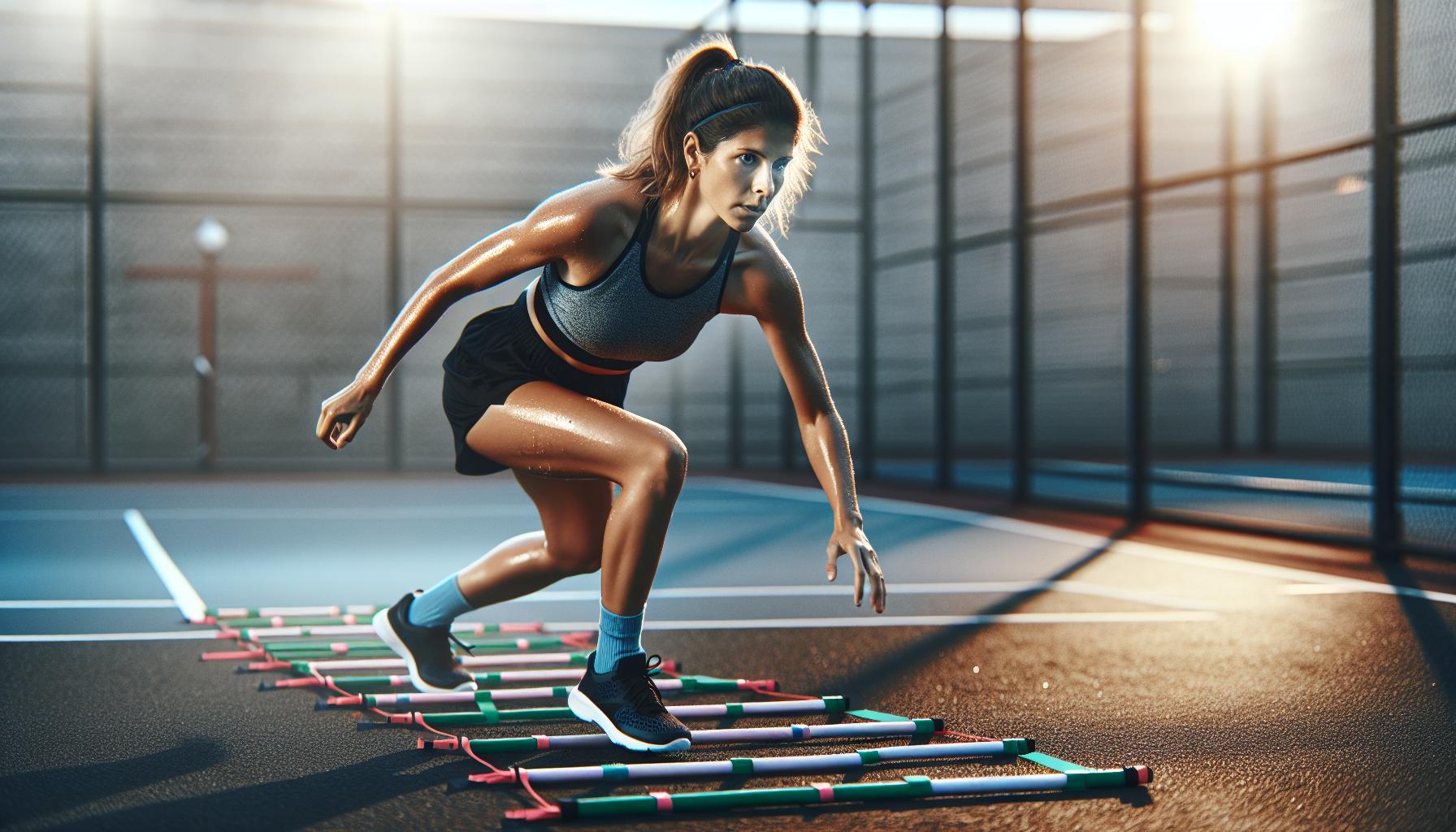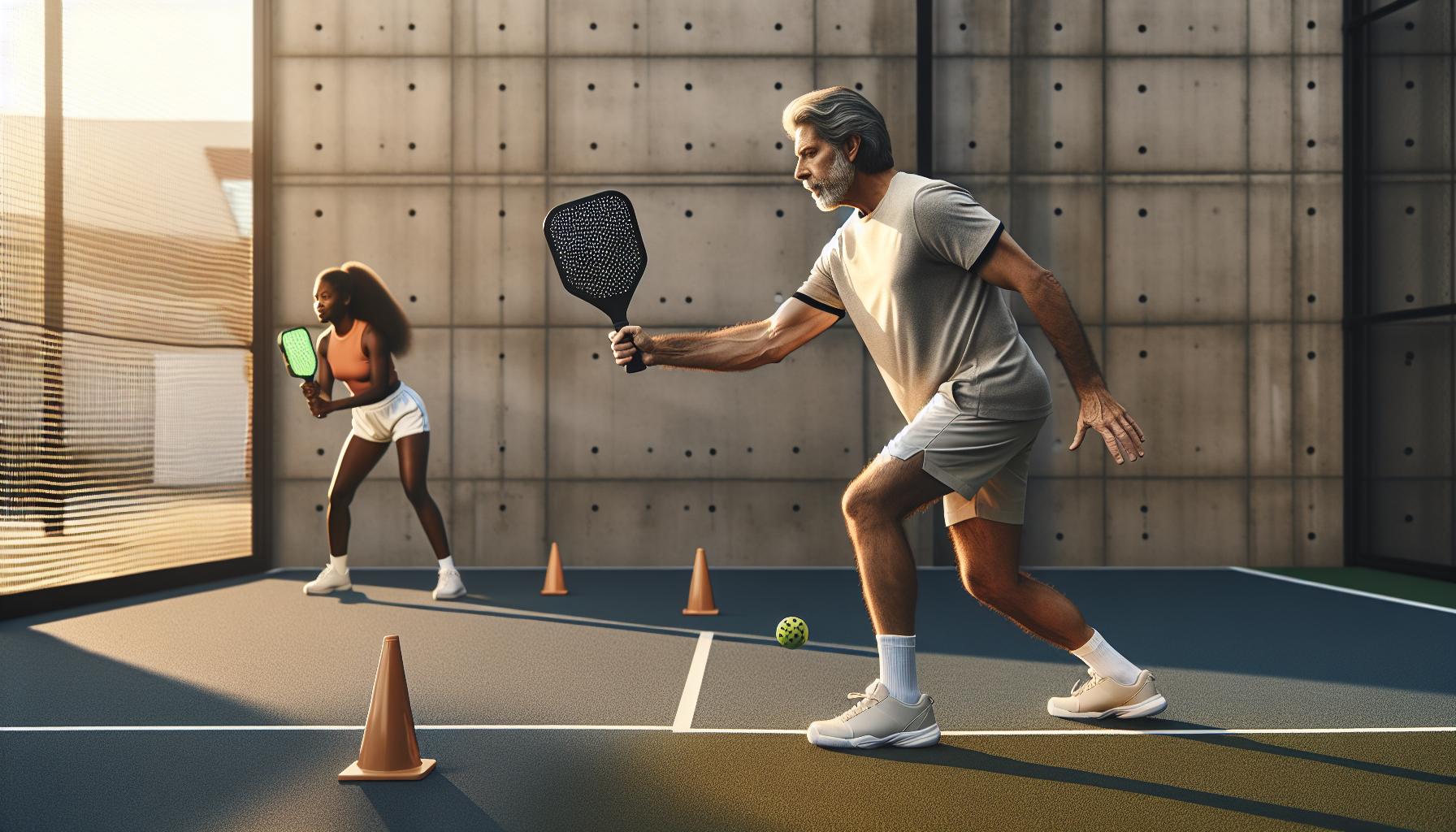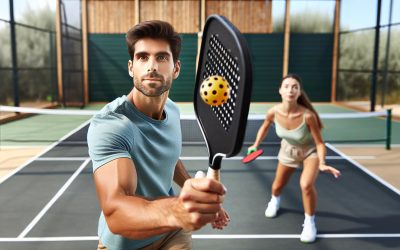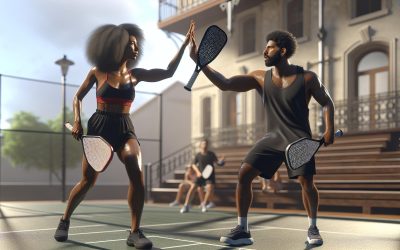Improving your pickleball backhand can feel like a daunting task, especially for intermediate players who’ve hit a plateau. It’s that tricky shot that can make or break your game, and let’s face it, everyone wants that solid, reliable backhand that can send the ball flying just where it’s intended.
But fear not! With the right approach and a bit of practice, anyone can turn their backhand from a weakness into a strength. Whether it’s mastering the grip, perfecting the swing, or understanding the strategic placement of the ball, there are plenty of tips and tricks that can elevate your game. Let’s dive into how you can improve your pickleball backhand and become a more formidable player on the court.
Mastering the Grip
Improving your pickleball backhand begins with the essential foundation of any great shot: the grip. For intermediate players, the grip is not just about holding the paddle; it’s about optimizing control, power, and spin. These facets of your backhand can be significantly enhanced just by tweaking how you hold your paddle.
Firstly, understanding the Continental Grip is crucial. This grip is achieved by holding the paddle so that the base knuckle of your index finger is on the top bevel of the paddle handle. The Continental Grip offers a blend of flexibility and stability, allowing players to easily switch between forehand and backhand shots without needing to adjust their grip mid-play. It’s particularly effective for serves, volleys, and, of course, the backhand.
To master this grip, start by holding your paddle in front of you, face perpendicular to the ground. Align the “V” created by your thumb and index finger to the top edge of the handle. The pressure should be firm but flexible, ensuring you can snap wrist movements for those powerful backhand returns.
Key points to remember include:
- Keep your grip relaxed to avoid fatigue and increase maneuverability.
- Practice switching between grips to find what suits your playing style best.
- Utilize the Continental Grip for a balanced approach to your backhand shots.
Moreover, adjusting the grip based on the specific backhand shot you’re attempting can be a game-changer. For slice backhands, slightly rotating the paddle in your hand to face more downwards can help you achieve that elusive spin, making it harder for your opponent to predict and return the ball.
On the other hand, for more power-driven backhands or top-spin shots, focusing on the follow-through and where the weight of your body is distributed throughout the shot is equally important. Your grip should allow your wrist to move freely, enabling you to impart as much power and spin as needed. To facilitate this, practice your backhand swings focusing on wrist flexibility and strength. Exercises to enhance wrist mobility can be significantly beneficial for this purpose.
Perfecting the Swing

Once pickleball players have a firm grasp of the Continental Grip, the next step on the journey to a formidable backhand lies in perfecting the swing. Mastery of the swing not only enhances power but also improves accuracy, making it a critical component for intermediate players looking to up their game.
The Stance is Key
A stable stance serves as the foundation for a powerful backhand swing. Players should ensure their feet are shoulder-width apart, with knees slightly bent to maintain balance. The side of the body facing the net should be the same as the hand holding the paddle, allowing for a fluid motion during the swing.
Focus on the Follow-Through
A common mistake many intermediates make is not following through with their swing. To generate more power and control, one must ensure the paddle moves across the body in a smooth arc. The follow-through should end with the paddle over the opposite shoulder, ensuring maximum power is transferred to the ball.
Incorporate Body Rotation
To add an extra layer of potency to the backhand, incorporating body rotation is essential. As the swing begins, rotating the torso from the hips can significantly increase the force behind the shot. This motion should be fluid and coordinated with the arm movement for the best results.
Practice Drills
Improving the backhand swing is all about repetition. Here are some drills that can help:
- Wall Hits: Simply hitting the ball against a wall can improve timing and consistency. Aim for a specific spot to refine accuracy.
- Shadow Swinging: Practicing the swing motion without a ball can help ingraine the proper technique and improve muscle memory.
- Partner Drills: Practicing with a partner can add a level of unpredictability and realism to the exercise, further enhancing skills.
Incorporating Spin
As proficiency grows, adding spin to the backhand becomes a valuable tool. This requires a slight adjustment to the paddle’s angle at impact and playing around with the timing of the swing. Spin can not only confuse opponents but also create more challenging shots for them to return.
Recording and Reviewing
One of the best ways to identify areas for improvement is by recording practice sessions. Watching these videos allows players to critique their stance, swing, and follow-through. It’s also a good idea to watch videos of advanced players to understand what an effective backhand swing looks like in action.
Understanding Strategic Ball Placement

Once intermediate pickleball players have refined their backhand swing, focusing on strategic ball placement becomes crucial. Mastering where to send the ball can significantly disrupt opponents’ positioning and strategy. Strategic placement isn’t just about hitting the ball hard; it’s about making smart decisions that force opponents into difficult situations.
Depth and Width are key factors in strategic ball placement. Sending the ball deep into the opponent’s court limits their forward movement and reduces their chance to take control of the net. Conversely, hitting the ball with width, aiming for the sidelines, can stretch an opponent across the court. This not only tires them out but also opens up spaces for scoring points.
To achieve precise control over the ball’s placement, players need to be mindful of their body positioning and paddle angle at the moment of impact. A slight adjustment can mean the difference between a winning shot and a missed opportunity. Here are some techniques to enhance strategic ball placement:
- Target Practice: Set up targets in various areas of the court and practice hitting them with your backhand. This will not only improve accuracy but also help players get a feel for how different angles affect the ball’s trajectory.
- Vary Speed and Spin: Varying the speed and adding spin to the ball can complicate the opponent’s response. A slower, spin-heavy shot might not travel far, but it can bounce unpredictably, making it harder for opponents to execute a strong return.
Incorporating drills that simulate real-game scenarios can be particularly effective. One such drill involves a partner calling out different areas of the court to target during rallies. This not only improves reaction time but also builds a player’s ability to quickly assess the best places to hit the ball under pressure.
Understanding opponents’ weaknesses and tendencies is another layer of strategic ball placement. For instance, if an opponent struggles with backhand returns, consistently targeting that area can force errors or weaker returns, which can then be exploited.
It’s also beneficial to watch and analyze professional matches to see how top players use strategic placement to their advantage. They often execute shots that look effortless but are the result of meticulous planning and practice. Taking note of how these players set up their shots and the outcomes they achieve can provide valuable insights for intermediate players looking to elevate their game.
Footwork and Positioning

In the evolving landscape of pickleball, one can’t overlook the role of Footwork and Positioning in delivering a powerful backhand. For intermediate players seeking to refine their game, mastering these elements can significantly elevate performance. Footwork, in particular, isn’t just about moving around the court; it’s about doing so with purpose and anticipation.
Good footwork ensures players are always in the optimal position to strike the ball. This means moving parallel to the net when necessary and stepping back or forward to adjust to the ball’s depth. It requires a balance of agility and foresight, predicting where the ball will land and moving accordingly.
Effective positioning, on the other hand, is about knowing where to be on the court relative to the ball and the opponent. It’s strategic placement that dictates the flow of the game. Players should aim to position themselves in a way that opens up the court for offensive shots while also being ready to switch to defense when needed. This dynamic positioning puts pressure on opponents, making it harder for them to predict the next move.
To improve footwork and positioning, intermediate players can focus on the following practices:
- Ladder drills: These improve agility and speed, critical for moving effectively across the court.
- Shadow playing: Practicing movements without the ball allows players to focus on their footwork and positioning without the added pressure of ball control.
- Split step training: This technique involves a small hop as the opponent hits the ball, prepping the player to move in any direction quickly.
The essence of proper footwork and positioning is anticipation. Players who can anticipate the ball’s trajectory and their opponents’ moves have a clear advantage. They’re able to position themselves in a spot that not only makes receiving the ball easier but also sets them up for a stronger return. Incorporating these elements into practice sessions can yield significant improvements.
A handy tip is to record practice sessions. Watching oneself play can reveal patterns and habits in footwork and positioning that need improvement. It’s also beneficial to study professional players, noting how they move and position themselves during matches. Observing these nuances provides practical insights that can be adapted into one’s own game.
Drills and Practice Techniques

Intermediate pickleball players often seek methods to refine their backhand and transform it into a formidable aspect of their game. Improving one’s backhand requires not only understanding the mechanics but also engaging in targeted drills and practice techniques that reinforce muscle memory and enhance precision.
Wall Rallies are a cornerstone for backhand improvement. Players should find a solid wall and mark a target at net height. Standing a comfortable distance away, they initiate continuous backhand rallies against the wall, aiming to maintain consistent hits on the target. This drill sharpens accuracy, strengthens the wrist, and builds endurance, making it invaluable for players dedicated to refining their backhand.
Incorporating Target Practice into one’s routine offers a direct approach to improving shot placement. Setting up cones or markers in specific areas of the court allows players to focus on landing their backhand shots with precision. The goal is to hit these targets from various positions on the court, simulating match scenarios, which enhances a player’s ability to adjust their backhand stroke under different conditions.
To amplify footwork and positioning, the Cross-Court Drill proves exceptionally beneficial. This involves players exchanging cross-court backhand shots with a partner, aiming to maintain a rally for as long as possible. The focus is on moving efficiently, preparing early for the shot, and employing the correct footwork to execute a powerful backhand. This drill not only improves backhand technique but also boosts players’ agility and ability to anticipate the opponent’s return.
Advanced players know the importance of incorporating Spin Variations into their backhand. Practicing backhand slices and top-spin shots adds depth to one’s game, making their backhand unpredictable and challenging to counter. Players should dedicate sessions to mastering these spin techniques, understanding how to alter grip and swing path to generate the desired spin. Engaging in drills that require alternating between spin types sharpens control and versatility.
Lastly, Competitive Play drills, such as points play focusing solely on backhand exchanges, push players out of their comfort zones and into real-game strategies. By limiting the gameplay to backhand strokes, players learn to rely on and trust in the strength of their backhand during competitive situations.
Conclusion
Elevating your pickleball backhand from intermediate to advanced isn’t just about hitting the ball harder. It’s about precision, endurance, and strategy. By integrating Wall Rallies, Target Practice, and Cross-Court Drills into your routine, you’re laying a solid foundation. Adding Spin Variations and engaging in Competitive Play drills sharpens your edge, making your backhand not just a return but a weapon. Remember, practice doesn’t make perfect; practice makes permanent. So, make every backhand count and watch as your game transforms.














0 Comments